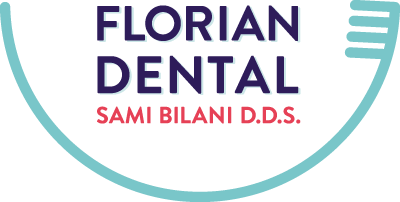We all know how to brush our teeth, right? Not exactly. Brushing properly doesn’t come naturally. It takes practice and know-how. Our teeth are covered with a sticky film of bacteria, called plaque, which is the main cause of tooth decay and gum disease. Thorough brushing can help remove plaque, but only if it’s done correctly.
Brushing Guidelines
- Brush lightly with soft or extra-soft bristles twice daily for at least two minutes
- Place your toothbrush at a 45-degree angle to the gums
- Move the brush in a circular motion or back and forth in short strokes
- Brush the outer and inner surfaces of teeth, as well as the chewing surfaces
- Use the tip of the brush to clean the inside surfaces of front teeth
- Gently brush your tongue to remove bacteria and freshen breath, then rinse
- Have a standard routine for brushing
- Brush no more than three times daily
Your Toothbrush
At the first sign of wear, you should replace your toothbrush. At the very least, you should replace it every three months. It is also important to replace your toothbrush after you’ve had a cold, since the bristles have germs that can lead to getting sick all over again. You may want to consider choosing a brush that ahs the seal of approval from the American Dental Association. Electric toothbrushes are acceptable but not necessary. They are helpful for people who don’t have a good brushing technique and for those with physical limitation that makes brushing difficult.
Choosing a Toothpaste
The choices can be overwhelming. Ask your dentist or dental hygienist to recommend a brand or type that would benefit you the most. You may also want to look for the ADA Seal of Approval, which ensures that the American Dental Association has tested the toothpaste. Some toothpaste ingredients can irritate teeth, cheeks, or lips. If this occurs, change toothpastes. If the problem continues, see your dentist.
Flossing Guidelines
Brushing your teeth is essential for removing plaque from your teeth, but brushing alone isn’t enough. Cleaning between your teeth with floss removes buildup between the teeth and under the gum line where your brush can’t reach and where plaque can build up. Daily flossing and dental checkups are the only effective way to remove this plaque. If you haven’t flossed your teeth in a while, your gums may bleed the first few times you floss. This is normal.
Some people who find flossing awkward or difficult rely on other interdental cleaners. These include special brushes, floss holders, picks, sticks and irrigators. Floss threaders can be useful if you have a bridge or wear braces. If you use interdental cleaners, ask your hygienist how to use them properly to avoid injuring your gums.
Flossing Guidelines
- Choose a time to floss daily and stick to it
- Don’t rush – flossing takes time
- Use plenty of floss – the experts say to start with 18 inches
- Choose the type of floss that works best for you
How to Floss
- Starting with about 18 inches f floss, wind most of the floss around each middle finger, giving yourself an inch or two of floss to work with.
- Holding the floss tautly between your thumb and index fingers, slide it gently up and down.
- Gently curve the floss around the base of each tooth, making sure you go beneath the gum. To avoid injury to gum tissue, never snap or force the floss.
- Use clean sections of floss and you move from tooth to tooth.
- To remove the floss, use the same back and forth motion to bring the floss up and away.
Types of Floss
There are many different types of dental floss to choose from, they include:
- Waxed/unwaxed
- Flavored/unflavored
- Ribbon
- Thread
Try different types of floss until you find the one that works best for you. If your teeth are close together, waxed floss may slide more easily between teeth. Less expensive nylon floss can sometimes tear or shred. Single filament floss is more expensive, but resists shredding. Both types of floss can be effective if used correctly.
You can heave healthy teeth and gums with daily brushing and flossing. In addition, you should eat a healthy, balanced diet and visit your hygienist or dentist on a regular basis.
